Fliers Commemorative Badge, by C. E. Juncker (in silvered brass)
CATEGORY: Version
SKU: 03.GEM.0103.101.01.002
Estimated market value:
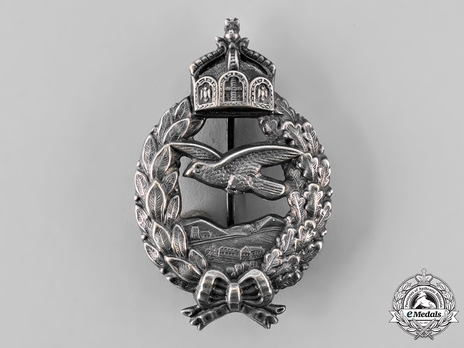
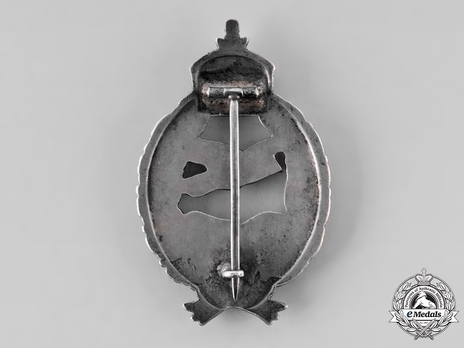
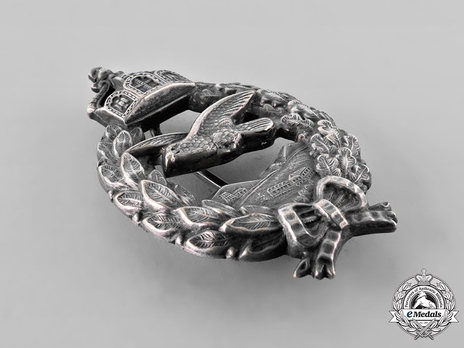
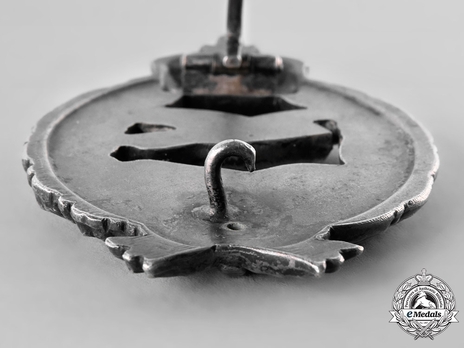
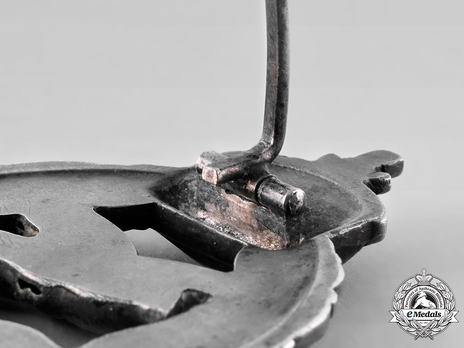
Estimated market value:
An ovular badge constructed of silver plated brass, the obverse centre bears a left-flying cut-out eagle over a rural landscape, encompassed by a wreath of laurel and oak tied with a ribbon at the bottom, topped by an imperial crown, the reverse is plain and bears a vertical pinback with a round wire catch, measuring 45.42 mm (w) x 71.56 mm (h), weighing 24.6 g, unmarked but bears characteristics of C.E. Juncker, very fine.
The Fliers Commemorative Badge was introduced by Emperor Wilhelm II on January 27, 1914. It is silver-coloured and was worn in the centre of the left breast.
It was worn by members of the air force that were no longer considered for service in the event of mobilisation, but had served for a minimum of three consecutive years prior. However, members were also considered eligible if they had to retire due to injuries sustained during active service.
The Fliers Commemorative Badge is in the same general design as the Pilot Badge and the Observer Badge. Its shape is oval. It is framed by laurel on the left and oak leaves on the right side, with an Imperial crown at the top and a bow at the bottom. In the centre, differing from the Pilot and Observer Badges, is an eagle in flight, facing to the viewer’s left. Below it is the same landscape design as on the Pilot’s Badge, but above the hills and behind the eagle the badge is cut out with the reverse pinback being visible.
Badges measure approximately 45mm in width and 72mm in height. They weigh between 10 and 40g. The large variation is due to different materials and designs being used.
As with the Pilot and Observer Badges, the company of C. E. Juncker produced Fliers Commemorative Badges made of silver during the war years. Genuine examples are rarely available to collectors these days.
Most Fliers Commemorative Badges were produced during the early Weimar Republic years of 1919 and 1920. These were made of either silver or brass. Most of the post-war pieces produced and sold all the way up to 1945 were made by manufacturer P. Meybauer.
Some badges were produced in a reduced size, the so-called “Prinzen” size. These generally measure 30x48mm.
It is unknown how many Fliers Commemorative Badges were awarded, since the original documents were destroyed during the Second World War. Estimates place the number of German recipients at around 300.

Comments
Sign in to comment and reply.

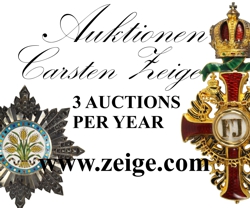
Scroll Top